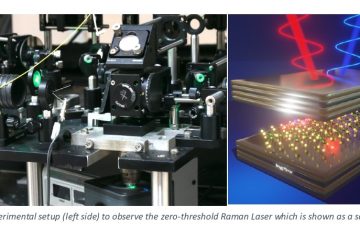IIT Kharagpur’s 5G Drone Fleet to provide Fast Deployable, Portable, Air-borne Communication Network
Researchers from G S Sanyal School of Telecommunication at IIT Kharagpur have developed a UAV assisted communication infrastructure for 5G that can serve as an air-borne mobile telecom tower during emergency situations. The system includes an Android-based application fitted to a fleet of drones which are programmed to create emergency communication networks by extending cellular network coverage from the closest available mobile towers.
While 4G is still making inroads in deeper reaches of India, the transition to 5G is eagerly awaited, especially with the popularity of the IoTs triggering a surge in the number of mobile data traffic. But 5G has a lot more to offer than a faster network. The landscape of future 5G access networks is expected to seamlessly and ubiquitously connect everything, and support at least 1000-fold traffic volumes, 100 billion connected wireless devices, and diversified requirements on reliability, latency, battery lifetime, etc.
Flying base stations are a feature that enhances wireless capacity and coverage footprint on the ground with ultra-dense traffic demands, to meet the requirements of 5G and B5G cellular communications. Such a UAV-based network is inhabitable for various applications such as setting-up emergency communication networks over disaster regions, acting as a relay or maintain Quality of Service over densely populated areas like concerts, fests, and stadiums.
UAVs, however, have one major challenge – the battery life of the device which is about 45 minutes which makes it difficult to maintain consistency in the service. Further, in an emergency situation, it is crucial to protect critical data within a micro span of time.
The research team at IIT Kharagpur comprising of Kirtan Gopal Panda, Shrayan Das, Bharat Dwivedi, Aunullah Qaiser and led by Prof. Debarati Sen, at the G S Sanyal School of Telecommunication set up by HCL co-founder Arjun Malhotra, have responded to this bottleneck.
“Through intelligent programming, we can deploy our 5G-connected drone fleet in a particular location as soon as the first emergency signal is flagged and complete the evacuation of the endangered data in the telecommunication backbone network within the first 3 minutes of occurrence of a disaster. The drones will relay the data to the rescue server which is located thousands of miles away while restoring the network connection through the nearest mobile tower,” said Prof. Debarati Sen.
In the case of network disruptions, the drones can intelligently avoid it by changing their location and bypassing the jam. In addition to data protection, the localization and rescue based services can be used to locate survivors and provide emergency aid while decreasing the time for first responders. For people traveling to an affected region and devoid of any cellular network, they can be auto-connected to such nearby drone service as they search for a mobile network.
“We have already studied the performance of the UAV network with the APP ‘NerQuake’ in situations of emergency response in disaster management and maintenance of the quality of service by deploying a fleet of four unmanned aerial vehicles. We have used network coverage data of various mobile service providers in the North-Eastern states in verifying the functionality of the APP,” remarked Prof. Sen.
The team has submitted the phase-I report to MEITY, Govt. of India who has been funding the project. The researchers are open to the commercialization of this intelligent UAV system.
“The prospects of this system are wide-ranging. Apart from a disaster situation, these smart drones can be used for crowd management. These can further be used to extract data from smart meters without any manned service at the location or surveillance of remote terrains with the transmission of real-time surveillance data. In agriculture, these UAVs can be used for crop health monitoring and pesticide spray on crops,” added the researchers.
Contact: Prof. Debarati Sen, Associate Professor, G.S Sanyal School of Telecommunication, E: debarati@gssst.iitkgp.ac.in;
Media Contact: Shreyoshi Ghosh, E: shreyoshi@adm.iitkgp.ac.in
Follow us: Facebook / Twitter: @IITKgp Instagram: @iit.kgp For news visit: https://kgpchronicle.iitkgp.ac.in/
Media Coverage:
| ET Prime | Economic Times | ET CIO | ET Telecom |
| DD News (19:16 – 21:07) | Gadgets Now | Hindustan Times | Yahoo News |
| ABP Education | NDTV | The Week | Outlook |
| AsiaNet | Careers 360 | Skill Outlook | India Times |



